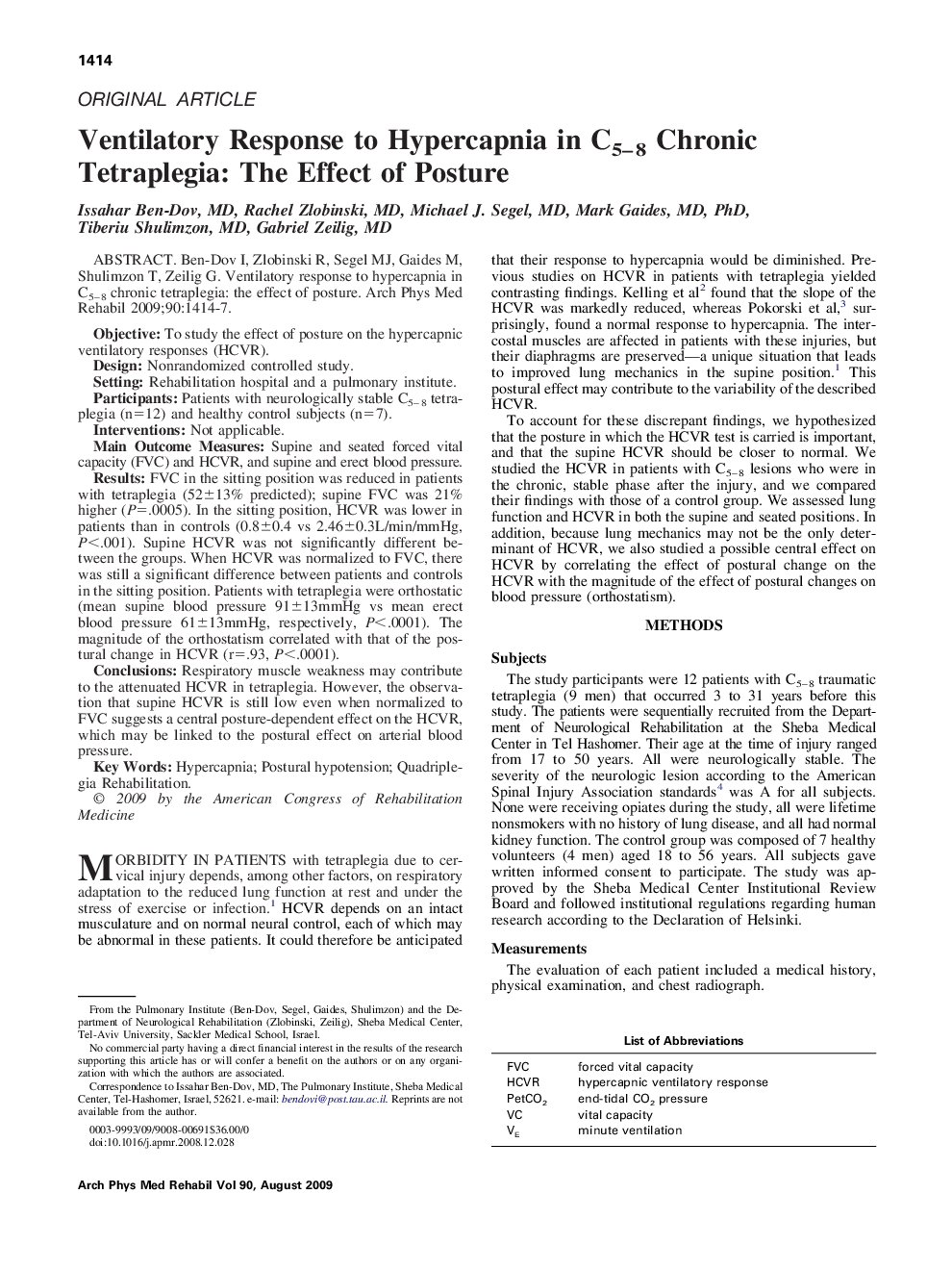| Article ID | Journal | Published Year | Pages | File Type |
|---|---|---|---|---|
| 3452188 | Archives of Physical Medicine and Rehabilitation | 2009 | 4 Pages |
Ben-Dov I, Zlobinski R, Segel MJ, Gaides M, Shulimzon T, Zeilig G. Ventilatory response to hypercapnia in C5–8 chronic tetraplegia: the effect of posture.ObjectiveTo study the effect of posture on the hypercapnic ventilatory responses (HCVR).DesignNonrandomized controlled study.SettingRehabilitation hospital and a pulmonary institute.ParticipantsPatients with neurologically stable C5–8 tetraplegia (n=12) and healthy control subjects (n=7).InterventionsNot applicable.Main Outcome MeasuresSupine and seated forced vital capacity (FVC) and HCVR, and supine and erect blood pressure.ResultsFVC in the sitting position was reduced in patients with tetraplegia (52±13% predicted); supine FVC was 21% higher (P=.0005). In the sitting position, HCVR was lower in patients than in controls (0.8±0.4 vs 2.46±0.3L/min/mmHg, P<.001). Supine HCVR was not significantly different between the groups. When HCVR was normalized to FVC, there was still a significant difference between patients and controls in the sitting position. Patients with tetraplegia were orthostatic (mean supine blood pressure 91±13mmHg vs mean erect blood pressure 61±13mmHg, respectively, P<.0001). The magnitude of the orthostatism correlated with that of the postural change in HCVR (r=.93, P<.0001).ConclusionsRespiratory muscle weakness may contribute to the attenuated HCVR in tetraplegia. However, the observation that supine HCVR is still low even when normalized to FVC suggests a central posture-dependent effect on the HCVR, which may be linked to the postural effect on arterial blood pressure.
